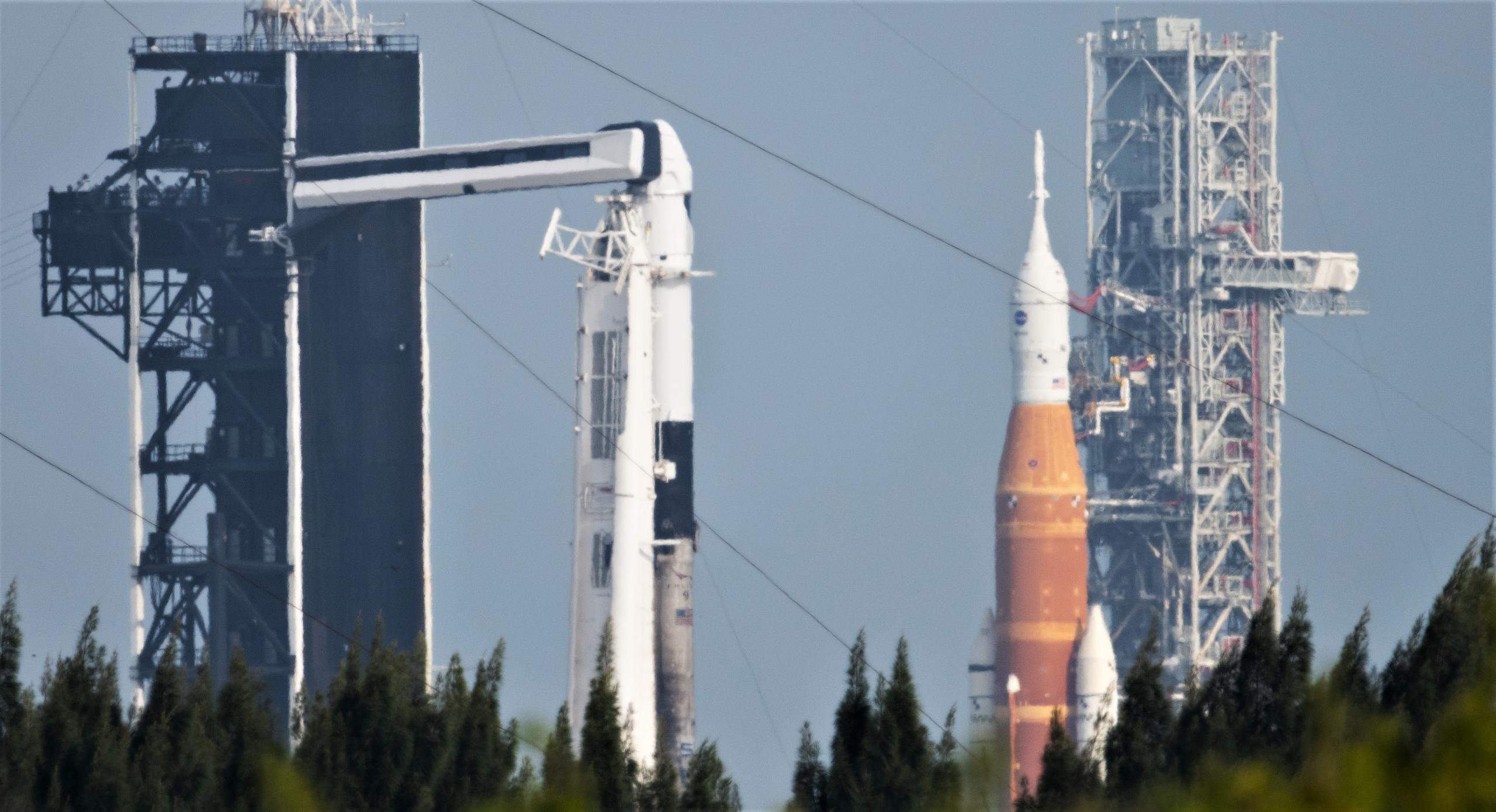
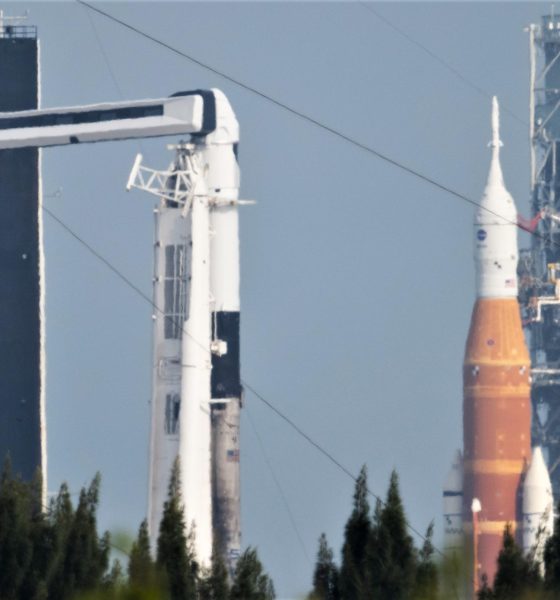
News
SpaceX, NASA targeting separate Moon launches days apart
NASA and a SpaceX customer have announced plans to launch two unrelated Moon missions days apart next month.
On October 12th, NASA confirmed that it will roll its Space Launch System (SLS) rocket out to its Kennedy Space Center LC-39A pad for the fourth time as early as November 4th. Barring surprises, the rocket’s next launch attempt is scheduled no earlier than (NET) 12:07 am EDT (17:07 UTC), November 14th. SLS is tasked with launching an uncrewed prototype of NASA’s Orion crew capsule on its way to the Moon, where the spacecraft will attempt to enter lunar orbit and conduct tests before returning to Earth.
The same day, Japanese startup ispace confirmed that HAKUTO-R M1, its first commercial Moon lander, is scheduled to launch on a SpaceX Falcon 9 rocket sometime between November 9th and 15th. While NASA has a $73M contract with ispace to develop a second-generation SERIES-2 Moon lander in the United States, the first-generation HAKUTO-R program has been an almost entirely private endeavor. The first M1 lander will attempt to deliver two rovers – one built by Japan and the other by the United Arab Emirates – and several other commercial and government payloads to the surface of the Moon.
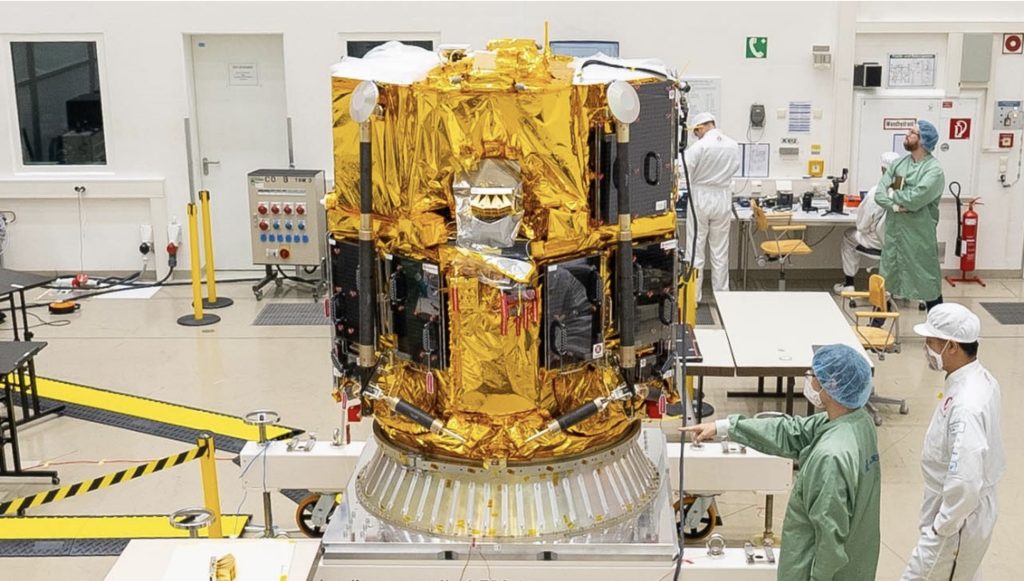
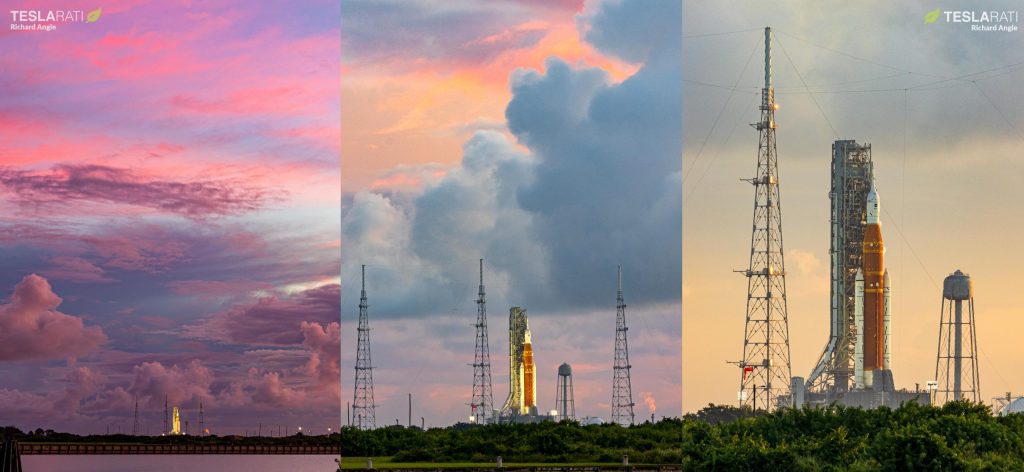
As of 2020, HAKUTO-R is expected to weigh around 1050 kilograms (~2300 lb) at launch and has been designed to land up to 30 kilograms (~66 lb) of usable payload on the Moon. ispace has designed and built most of the lander’s structures but contracted with Europe’s ArianeGroup to provide the propulsion system and fully assemble, integrate, and test the lander in Germany.
According to ispace’s documentation [PDF], Falcon 9 will launch HAKUTO-R into a “supersynchronous” Earth orbit, where the lander will check out its systems before eventually using its own propulsion to thrust itself free of Earth’s gravity well and into the Moon’s. It expects a nominal transit from Earth orbit to the lunar surface to take at least 20 days. The lander is designed to survive up to 12 days on the Moon, during which it will attempt to operate its onboard experiments, deploy both of its tiny rovers, and transmit all the data gathered back to Earth.
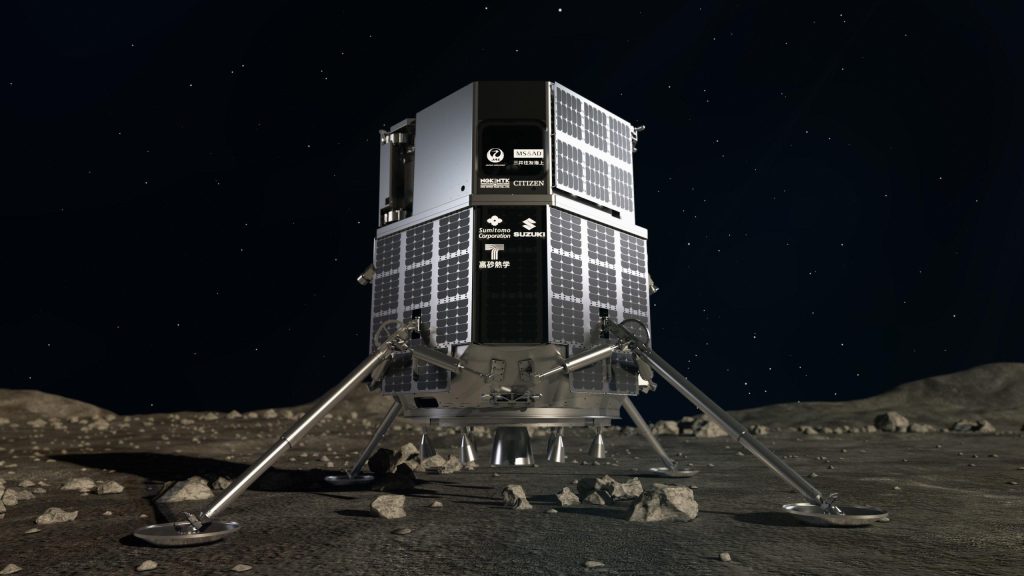
The startup initially [PDF] described its arrangements with SpaceX as contracts to launch two landers as secondary payloads on two Falcon 9 rockets. In its press releases, ispace no longer specifies whether the one-ton spacecraft will be the only payload on Falcon 9. It’s possible that HAKUTO-R M1 will be a secondary payload on SpaceX’s launch of the Eutelsat 10B geostationary communications satellite, which is currently scheduled NET November 11th. In a rare move, SpaceX will reportedly expend Falcon 9’s reusable first-stage booster during the mission, leaving much more performance on the table.
Update: Launch photographer Ben Cooper reports that Falcon 9’s reusable booster will fly back to the Florida coast to land on land after launching HAKUTO-R, strongly implying that the Moon lander will actually be the rocket’s only payload.
ispace has raised approximately $210 million since it was founded in 2010 – coincidentally the same year that the US Congress forced NASA to begin developing the SLS rocket. 12 years later, there’s a chance that the first launches of SLS and HAKUTO-R could occur hours apart.
When it rolls out next month, NASA’s SLS rocket will be heading to the launch pad for the fourth time. SLS and Orion have had a less-than-smooth journey to their first launch, suffering half a decade of delays and running tens of billions of dollars over budget as a result. Once all the pieces had arrived in Florida, it took NASA and its contractors about 12 months to finish assembling SLS and Orion and begin testing the integrated rocket.
Since integrated testing began in April 2022, SLS has undergone five publicized wet dress rehearsal (WDR) tests in April, June, and September. It also attempted to launch twice on August 29th and September 3rd, although both attempts were arguably a continuation of WDR testing in everything but name. But it appears that when the rocket rolls out for the fourth time, NASA will have finally completed nearly all of the testing it should have finished before loudly proclaiming that its “Mega Moon Rocket” was ready to launch back in August.
The SLS launch debut will almost certainly take precedence over any other Cape Canaveral launch around the same time, including HAKUTO-R M1, but SpaceX could potentially launch the Moon lander roughly one day before or after NASA’s Moon rocket.

News
Tesla hosts Rome Mayor for first Italian FSD Supervised road demo
The event marked the first time an Italian mayor tested the advanced driver-assistance system in person in Rome’s urban streets.
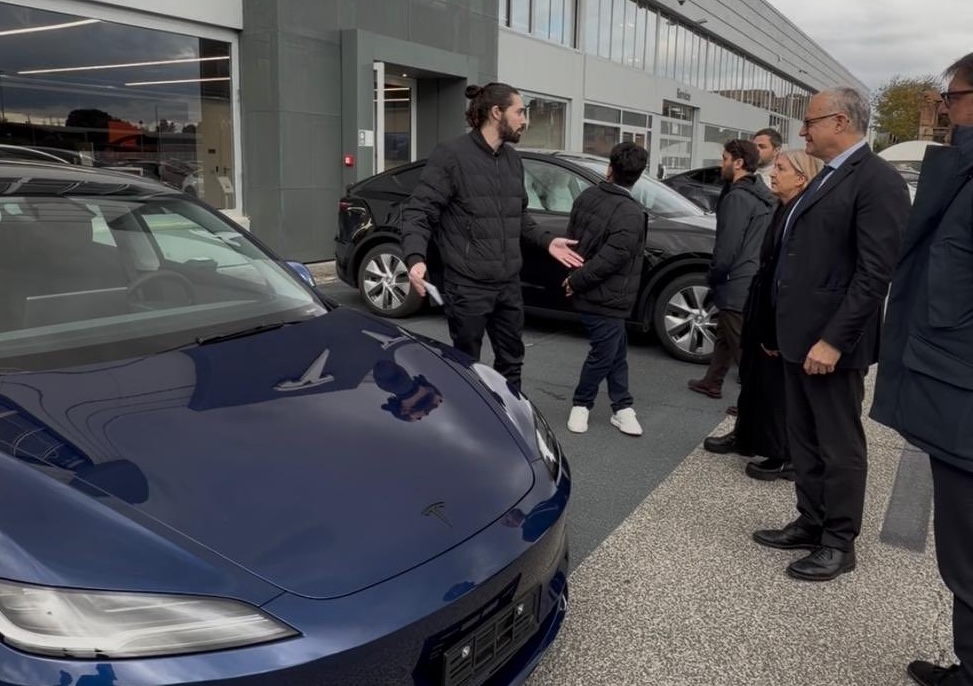
Tesla definitely seems to be actively engaging European officials on FSD’s capabilities, with the company hosting Rome Mayor Roberto Gualtieri and Mobility Assessor Eugenio Patanè for a hands-on road demonstration.
The event marked the first time an Italian mayor tested the advanced driver-assistance system in person in Rome’s urban streets. This comes amid Tesla’s push for FSD’s EU regulatory approvals in the coming year.
Rome officials experience FSD Supervised
Tesla conducted the demo using a Model 3 equipped with Full Self-Driving (Supervised), tackling typical Roman traffic including complex intersections, roundabouts, pedestrian crossings and mixed users like cars, bikes and scooters.
The system showcased AI-based assisted driving, prioritizing safety while maintaining flow. FSD also handled overtakes and lane decisions, though with constant driver supervision.
Investor Andrea Stroppa detailed the event on X, noting the system’s potential to reduce severe collision risks by up to seven times compared to traditional driving, based on Tesla’s data from billions of global fleet miles. The session highlighted FSD’s role as an assistance tool in its Supervised form, not a replacement, with the driver fully responsible at all times.
Path to European rollout
Tesla has logged over 1 million kilometers of testing across 17 European countries, including Italy, to refine FSD for local conditions. The fact that Rome officials personally tested FSD Supervised bodes well for the program’s approval, as it suggests that key individuals are closely watching Tesla’s efforts and innovations.
Assessor Patanè also highlighted the administration’s interest in technologies that boost road safety and urban travel quality, viewing them as aids for both private and public transport while respecting rules.
Replies on X urged involving Italy’s Transport Ministry to speed approvals, with one user noting, “Great idea to involve the mayor! It would be necessary to involve components of the Ministry of Transport and the government as soon as possible: it’s they who can accelerate the approval of FSD in Italy.”
News
Tesla FSD (Supervised) blows away French journalist after test ride
Cadot described FSD as “mind-blowing,” both for the safety of the vehicle’s driving and the “humanity” of its driving behaviors.
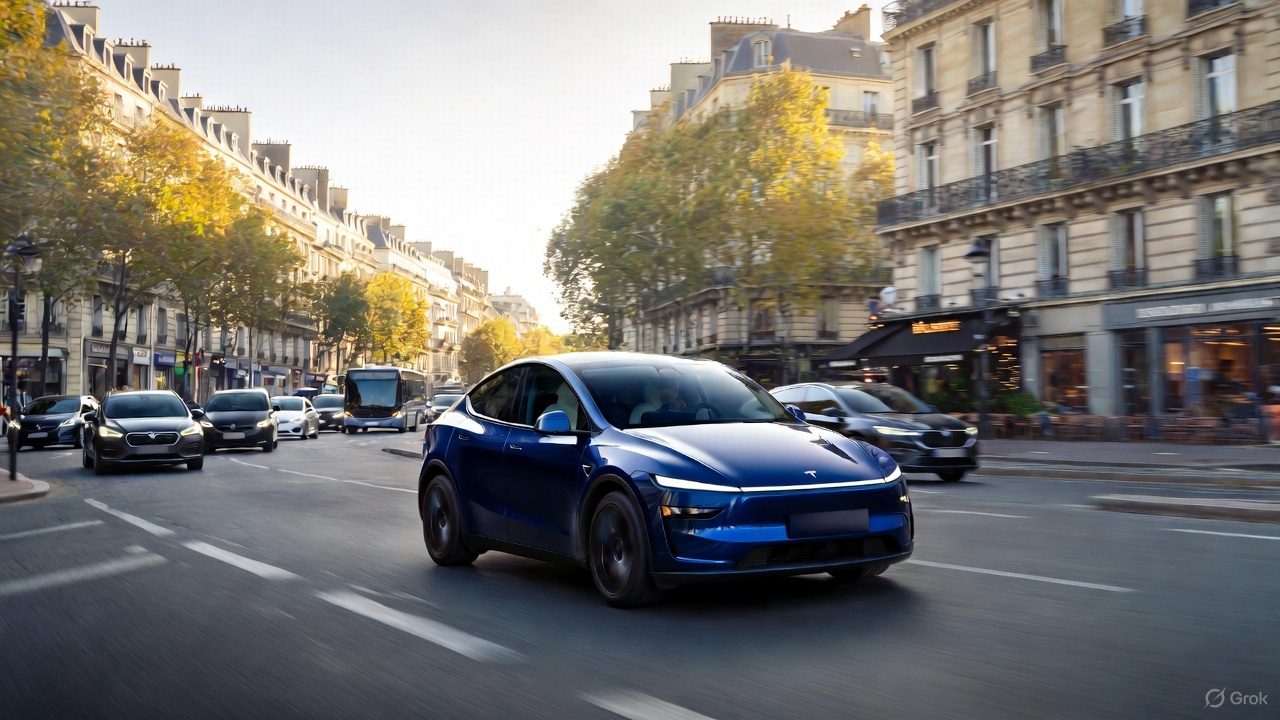
Tesla’s Full Self-Driving (Supervised) seems to be making waves in Europe, with French tech journalist Julien Cadot recently sharing a positive first-hand experience from a supervised test drive in France.
Cadot, who tested the system for Numerama after eight years of anticipation since early Autopilot trials, described FSD as “mind-blowing,” both for the safety of the vehicle’s driving and the “humanity” of its driving behaviors.
Julien Cadot’s FSD test in France
Cadot announced his upcoming test on X, writing in French: “I’m going to test Tesla’s FSD for Numerama in France. 8 years I’ve been waiting to relive the sensations of our very first contact with the unbridled Autopilot of the 2016s.” He followed up shortly after with an initial reaction, writing: “I don’t want to spoil too much because as media we were allowed to film everything and I have a huge video coming… But: it’s mind-blowing! Both for safety and for the ‘humanity’ of the choices.”
His later posts detailed FSD’s specific maneuvers that he found particularly compelling. These include the vehicle safely overtaking a delivery truck by inches, something Cadot said he personally would avoid to protect his rims, but FSD handled flawlessly. He also praised FSD’s cyclist overtakes, as the system always maintained the required 1.5-meter distance by encroaching on the opposite lane when clear. Ultimately, Cadot noted FSD’s decision-making prioritized safety and advancement, which is pretty remarkable.
FSD’s ‘human’ edge over Autopilot
When asked if FSD felt light-years ahead of standard Autopilot, Cadot replied: “It’s incomparable, it’s not the same language.” He elaborated on scenarios like bypassing a parked delivery truck across a solid white line, where FSD assessed safety and proceeded just as a human driver might, rather than halting indefinitely. This “humanity” impressed Cadot the most, as it allowed FSD to fluidly navigate real-world chaos like urban Paris traffic.
Tesla is currently hard at work pushing for the rollout of FSD to several European countries. Recent reports have revealed that Tesla has received approval to operate 19 FSD test vehicles on Spain’s roads, though this number could increase as the program develops. As per the Dirección General de Tráfico (DGT), Tesla would be able to operate its FSD fleet on any national route across Spain. Recent job openings also hint at Tesla starting FSD tests in Austria. Apart from this, the company is also holding FSD demonstrations in Germany, France, and Italy.
Elon Musk
Tesla Optimus shows off its newest capability as progress accelerates

Tesla Optimus showed off its newest capability as progress on the project continues to accelerate toward an ultimate goal of mass production in the coming years.
Tesla is still developing Optimus and preparing for the first stages of mass production, where units would be sold and shipped to customers. CEO Elon Musk has always marketed the humanoid robot as the biggest product in history, even outside of Tesla, but of all time.
He believes it will eliminate the need to manually perform monotonous tasks, like cleaning, mowing the lawn, and folding laundry.
However, lately, Musk has revealed even bigger plans for Optimus, including the ability to relieve humans of work entirely within the next 20 years.
JUST IN: Elon Musk says working will be ‘optional’ in less than 20 years because of AI and robotics. pic.twitter.com/l3S5kl5HBB
— Watcher.Guru (@WatcherGuru) November 30, 2025
Development at Tesla’s Artificial Intelligence and Robotics teams has progressed, and a new video was shown of the robot taking a light jog with what appeared to be some pretty natural form:
Just set a new PR in the lab pic.twitter.com/8kJ2om7uV7
— Tesla Optimus (@Tesla_Optimus) December 2, 2025
Optimus has also made several public appearances lately, including one at the Neural Information Processing Systems, or NeurIPS Conference. Some spectators shared videos of Optimus’s charging rig, as well as its movements and capabilities, most interestingly, the hand:
You have to hand it to Elon 🤟 pic.twitter.com/fZKDlmGAbe
— Ric Burton · NeurIPS 2025 (@_ricburton) December 2, 2025
The hand, forearm, and fingers have been one of the most evident challenges for Tesla in recent times, especially as it continues to work on its 3rd Generation iteration of Optimus.
Musk said during the Q3 Earnings Call:
“I don’t want to downplay the difficulty, but it’s an incredibly difficult thing, especially to create a hand that is as dexterous and capable as the human hand, which is incredible. The human hand is an incredible thing. The more you study the human hand, the more incredible you realize it is, and why you need four fingers and a thumb, why the fingers have certain degrees of freedom, why the various muscles are of different strengths, and fingers are of different lengths. It turns out that those are all there for a reason.”
The interesting part of the Optimus program so far is the fact that Tesla has made a lot of progress with other portions of the project, like movement, for example, which appears to have come a long way.
However, without a functional hand and fingers, Optimus could be rendered relatively useless, so it is evident that it has to figure this crucial part out first.








